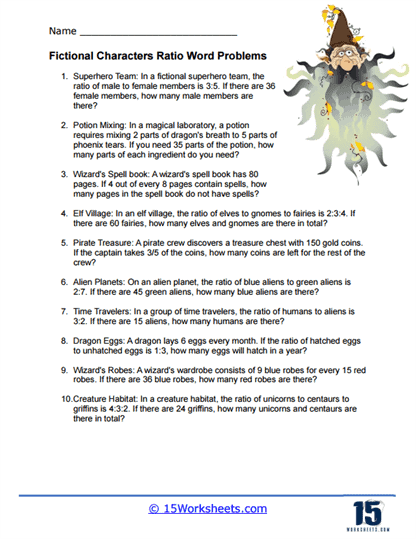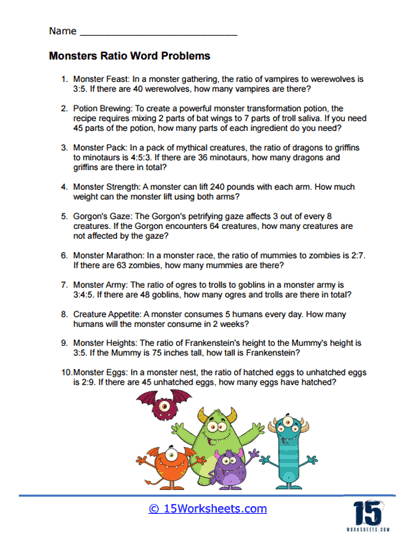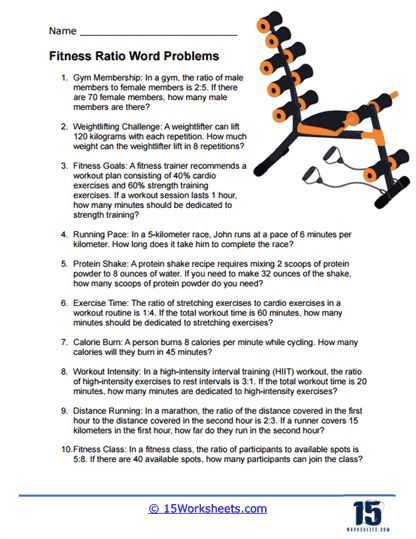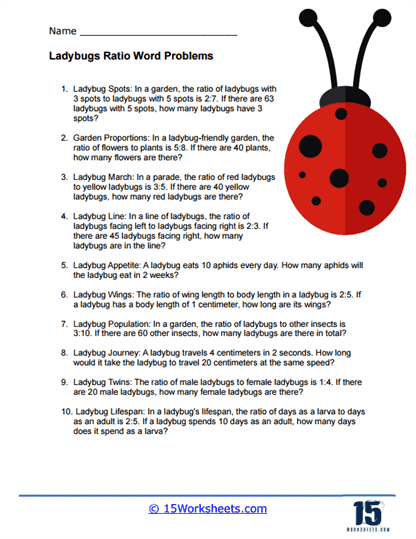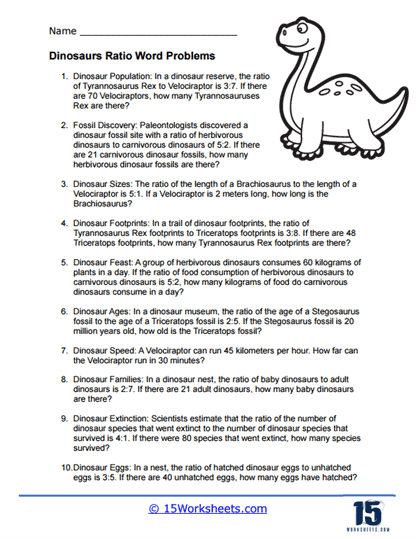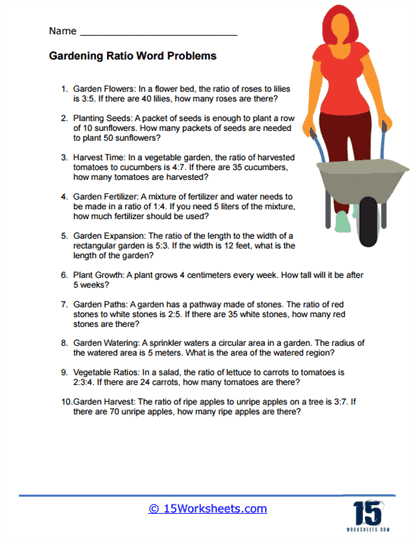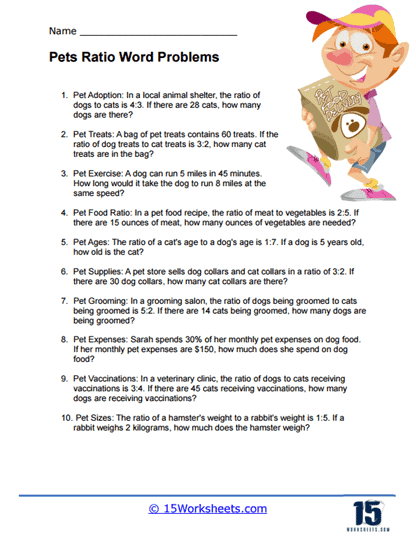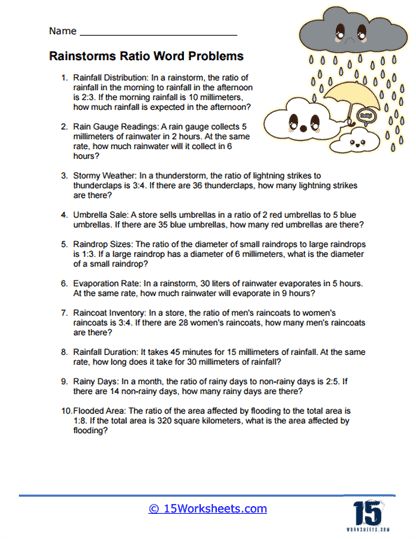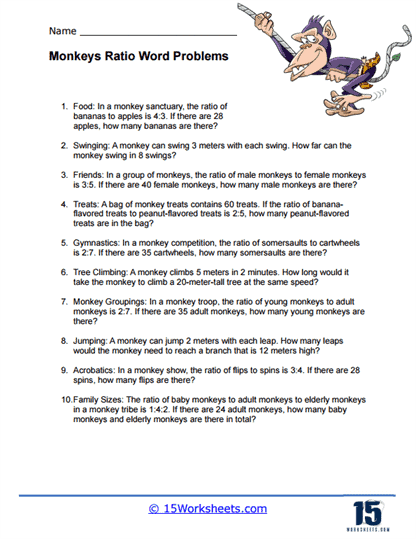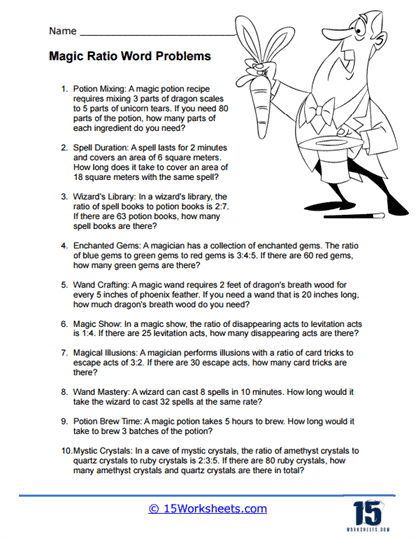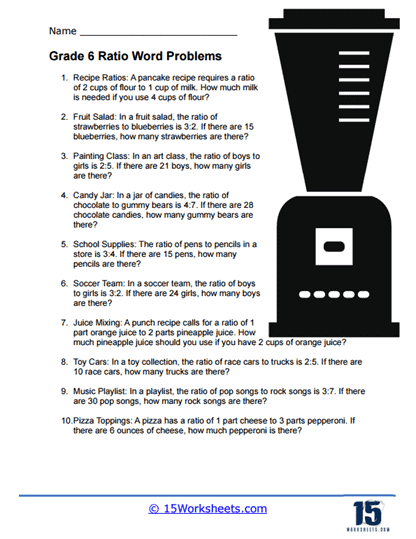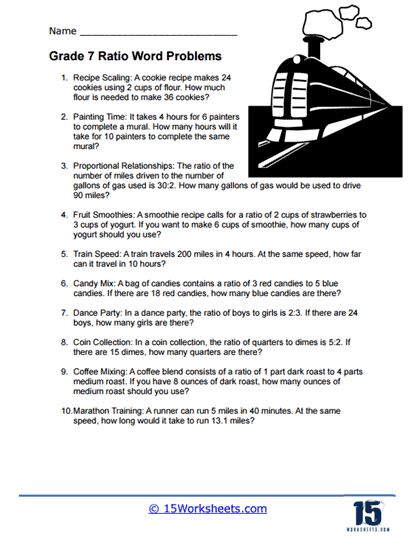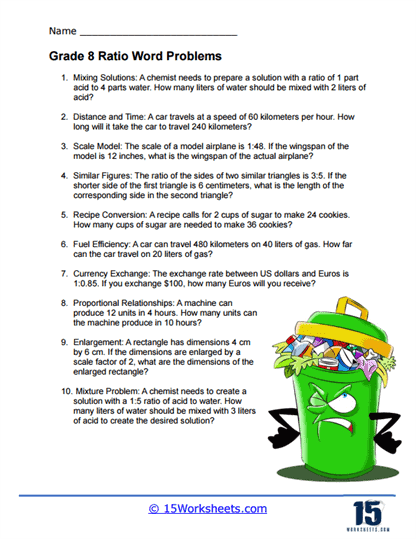Ratio and Proportions Word Problems Worksheets
About These 15 Worksheets
Ratio and proportion word problem worksheets will help students practice and enhance their understanding of ratios and proportions by solving real-world problems and scenarios that involve these mathematical concepts. Ratios and proportions are fundamental in mathematics and are used to compare quantities and make predictions. These worksheets provide practical contexts where students can apply their knowledge of ratios and proportions to find solutions, making these concepts more relevant and applicable to everyday life.
Ratio and proportion word problem worksheets cover a wide range of topics and complexity levels, making them suitable for different grade levels and skill levels. They can involve tasks such as finding equivalent ratios, solving for missing values in proportion problems, determining percentages, scaling up or down quantities, and solving real-life situations that require ratio and proportion calculations. These problems encourage students to interpret written information, identify relationships between quantities, and use ratio and proportion reasoning to find solutions.
By working through ratio and proportion word problem worksheets, students develop essential mathematical skills, including the ability to compare quantities accurately, analyze proportional relationships, and apply these concepts to solve problems in various contexts. These worksheets help students connect mathematics to the real world and prepare them for problem-solving challenges in fields like science, finance, engineering, and everyday decision-making.
What Are Ratio and Proportions Word Problems?
Ratio and proportion word problems involve solving mathematical problems that deal with ratios and proportions. These problems typically require you to compare quantities or find unknown values based on the given information. Ratios express the relationship between two or more quantities, while proportions are statements that two ratios are equal.
Here’s an example to help illustrate the concept:
Example: A recipe for a cake requires 2 cups of flour for every 3 eggs. If you want to make a cake with 6 cups of flour, how many eggs should you use?
Solution: To solve this problem, we can set up a proportion based on the given information. Let’s represent the number of eggs with ‘x’:
2 cups of flour / 3 eggs = 6 cups of flour / x eggs
Now, we can cross-multiply to solve for ‘x’:
2x = 3 x 6
2x = 18
x = 9
Therefore, you should use 9 eggs to make the cake with 6 cups of flour.
Ratio and proportion word problems can involve various scenarios, such as mixing ingredients, comparing quantities, scaling measurements, or determining unknown values based on known ratios. By understanding the principles of ratios and proportions, you can solve these types of problems effectively.
What is the Difference Between a Ratio and Proportion?
The difference between a ratio and a proportion lies in their definitions and usage:
Ratio – A ratio is a comparison between two or more quantities, usually expressed in the form of a fraction or with a colon (:). It represents the relationship or relative size between the quantities being compared. For example, if you have 2 red balls and 3 blue balls, the ratio of red balls to blue balls is 2:3 or 2/3.
Proportion – A proportion is a statement that two ratios are equal. It establishes an equivalence between two different ratios. It can be expressed using the symbol “=”, indicating that the two ratios have the same value. For example, if you have the ratio of red balls to blue balls as 2:3 and another ratio of green balls to yellow balls as 4:6, you can say that these two ratios are proportional if they are equal – 2:3 = 4:6.
In summary, a ratio is a comparison between quantities, while a proportion is a statement that two ratios are equal. Ratios describe the relationship between quantities, while proportions establish equality between ratios. Proportions can be useful in solving problems where you need to find an unknown value or scale quantities based on known ratios.
When in the Real World Would We Need to Solve Ratio and Proportion Word Problems?
Cooking and Baking – Recipes often require ingredients to be mixed in specific ratios. By understanding ratios and proportions, you can adjust recipes to make more or less food while maintaining the proper ingredient proportions.
Scaling and Proportional Relationships – In fields such as architecture, engineering, and design, scaling is crucial. Proportional relationships allow you to enlarge or reduce measurements while maintaining the same proportions. For instance, when creating blueprints or building models, you need to scale down measurements to fit on paper or scale up to build larger structures.
Finance and Economics – Financial planning often involves analyzing ratios and proportions. For instance, when calculating interest rates, determining profit margins, or comparing different investment options, understanding proportions can be helpful.
Maps and Geography – Maps use scales to represent real-world distances. Ratios and proportions are used to convert distances on maps to actual distances on the ground. Similarly, in geography, when studying population density or comparing sizes of countries or continents, ratios and proportions come into play.
Shopping and Discounts – Ratio and proportion word problems can be encountered while shopping. For example, when calculating discounts or determining the price per unit for a product, understanding proportions helps in making informed purchasing decisions.
Medication and Dosages – In the medical field, ratios and proportions are used to calculate proper medication dosages. Healthcare professionals need to determine the appropriate amount of medication to administer based on the patient’s weight, age, and other factors.


